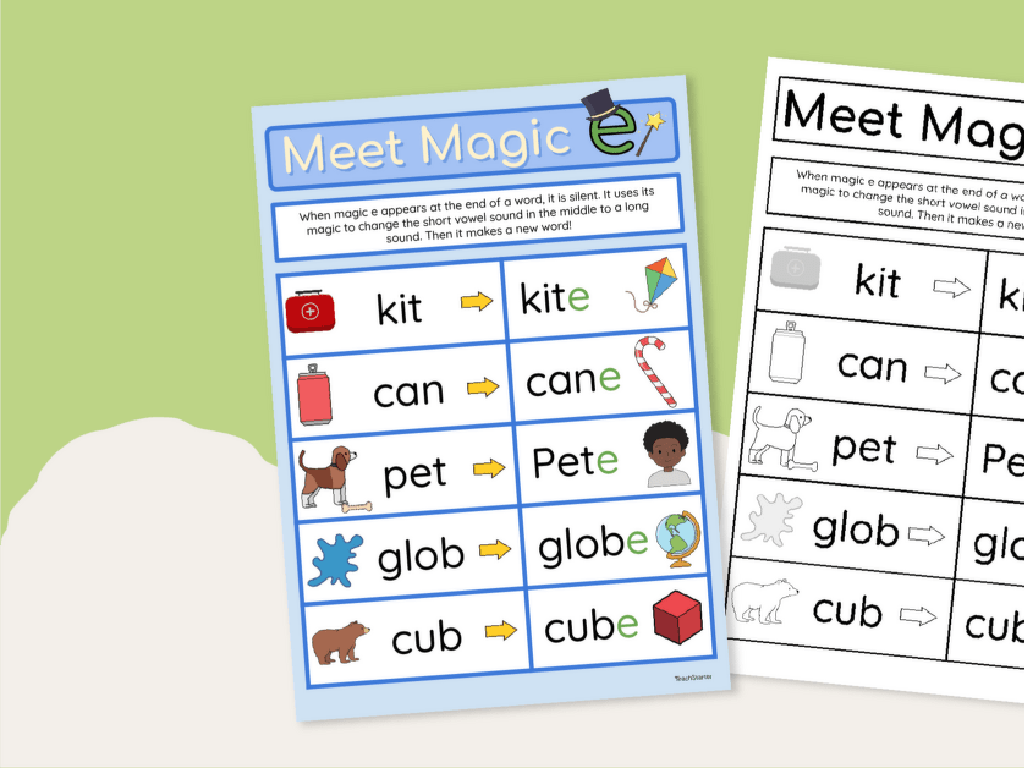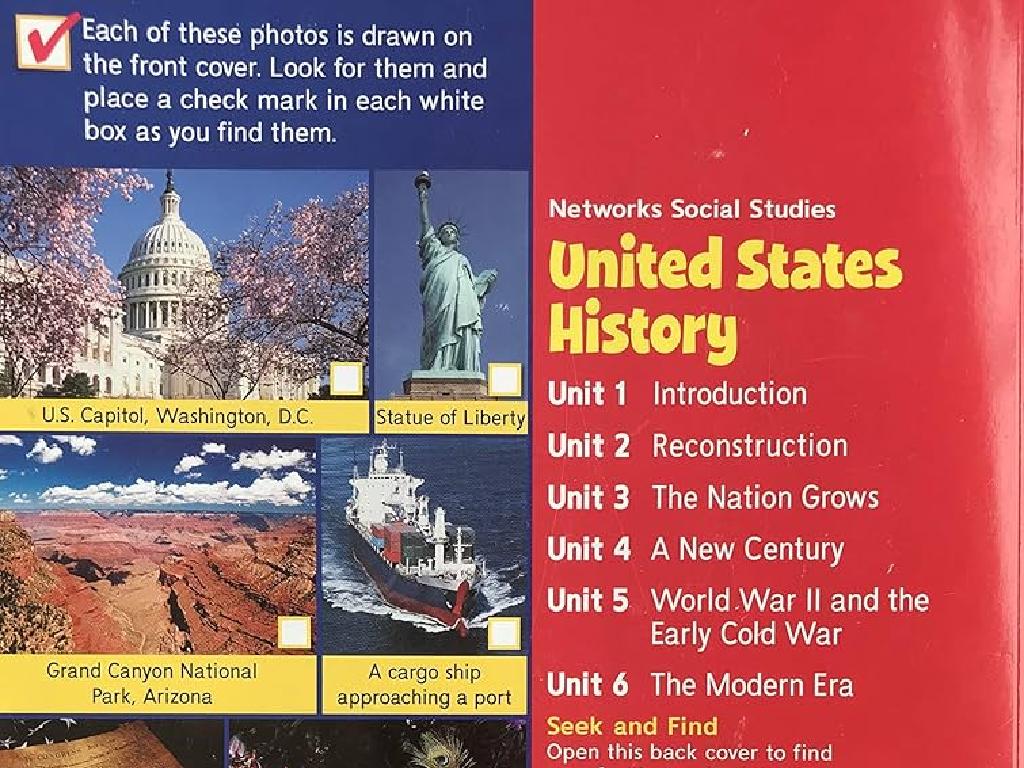Add, Subtract, Multiply, And Divide
Subject: Math
Grade: Fourth grade
Topic: Mixed Operations
Please LOG IN to download the presentation. Access is available to registered users only.
View More Content
Welcome to Mixed Operations!
– Combining operations in problems
– Today’s focus: 4 core operations
– Addition, subtraction, multiplication, division
– Importance of mixed operations
– Mixed operations build problem-solving skills
– Real-life application examples
– Cooking recipes, budgeting, time management
|
This slide introduces students to the concept of mixed operations, which involves using more than one arithmetic operation (addition, subtraction, multiplication, division) within a single problem. Emphasize that understanding how to combine these operations is crucial for solving complex math problems and is a skill that they will use throughout their lives. Provide examples of how mixed operations are used in everyday situations such as following a recipe, managing a budget, or planning their time. Encourage students to think of other examples from their daily lives where they use or could use mixed operations. This will help them see the relevance of what they are learning to the world outside the classroom.
Review of Basic Operations
– Recap: addition, subtraction, multiplication, division
– Addition combines numbers; subtraction finds the difference.
– Examples for each operation
– Multiplication is repeated addition; division splits into equal parts.
– Know your operation signs
– Plus (+), minus (-), times (×), divided by (÷).
– Practice mixed operation problems
– Use signs to solve math puzzles and real-world problems.
|
This slide is aimed at refreshing the students’ memory on the four basic operations in mathematics. Start by quickly going over what each operation represents and how it is used. Provide clear examples for each to solidify understanding. Emphasize the importance of recognizing and correctly using the operation signs, as they are the key to solving mixed operation problems. Encourage the students to practice with problems that require the use of multiple operations to find a solution, as this will help them prepare for more complex math challenges.
Mastering Mixed Operations: Order of Operations
– Learn PEMDAS/BODMAS rules
– Parentheses/Brackets, Exponents/Orders, Multiply/Divide, Add/Subtract
– Understand why order is crucial
– To avoid mistakes and get the right answer
– Solve examples step by step
– Example: 3 + 4 × 2 = 11, not 14 (Multiply before adding!)
– Practice with mixed operations
– Use order of operations in addition, subtraction, multiplication, and division problems
|
This slide introduces the concept of the order of operations, an essential part of arithmetic operations in mathematics. PEMDAS/BODMAS is a mnemonic that helps students remember the correct sequence to approach mixed operation problems: Parentheses/Brackets, Exponents/Orders, Multiplication/Division, and Addition/Subtraction. Emphasize the importance of following this order to obtain the correct answer. Provide clear examples, demonstrating each step of the process. Encourage students to practice with various problems to solidify their understanding. As an activity, students can create their own mixed operation problems and solve them in pairs.
Mastering Mixed Operations: Addition & Subtraction
– Steps for mixed addition & subtraction
– Follow the order of operations: solve additions and subtractions from left to right.
– Visualize with a number line
– Use a number line to add (move right) and subtract (move left).
– Practice mixed problems
– Try sample problems: 7 + 3 – 2 or 10 – 5 + 4.
|
This slide is aimed at helping fourth graders understand how to approach mixed operation problems involving addition and subtraction. Emphasize the importance of the order of operations, even when only dealing with addition and subtraction. Demonstrate using a number line as a visual aid to help students grasp the concept of moving right for addition and left for subtraction. Provide practice problems that combine both operations to ensure students can apply what they’ve learned. Encourage students to solve problems step-by-step and check their work with the number line. The goal is to build confidence in handling mixed operations smoothly.
Multiplying and Dividing in Mixed Operations
– Steps for multiplication & division
– Follow order of operations: multiply or divide before adding or subtracting.
– Visualize multiplication as groups
– Imagine 3 groups of 4 items to visualize 3 x 4.
– See division as distribution
– Think of dividing 12 items into 3 equal groups to understand 12 ÷ 3.
– Practice mixed operation problems
|
This slide introduces students to the concepts of multiplication and division within the context of mixed operation problems. Emphasize the importance of following the order of operations, also known as PEMDAS, where multiplication and division come before addition and subtraction. Use visual aids to help students understand multiplication as the combination of equal groups and division as the distribution of items into equal groups. Provide practice problems that combine both multiplication and division to solidify their understanding. Encourage students to visualize the problems to aid in comprehension. For example, use objects like blocks or drawings to represent groups for multiplication and sharing equally for division.
Mastering Mixed Operations
– Identifying the right operation
– Look for keywords; ‘total’ for addition, ‘left’ for subtraction, ‘times’ for multiplication, ‘split’ for division.
– Examples with all four operations
– 2 + 3 × 4 – 1 ÷ 2: Add, multiply, subtract, then divide.
– Step-by-step mixed problem guide
– Follow order of operations: parentheses, exponents, multiplication/division, addition/subtraction (PEMDAS).
– Practice makes perfect
|
This slide aims to equip students with the skills to tackle mixed operation problems. Start by teaching them to identify keywords in a problem statement that hint at the required operation. Provide examples that incorporate addition, subtraction, multiplication, and division to demonstrate how these operations can be combined in a single problem. Emphasize the importance of the order of operations (PEMDAS) in solving these problems correctly. Encourage students to practice with a variety of problems to build their confidence and proficiency in mixed operations.
Mixed Operations in Word Problems
– Solve problems using mixed operations
– Use addition, subtraction, multiplication, and division as needed
– Understand the story for clues
– Look for keywords that hint at the correct operation to use
– Practice with diverse problems
– Work through examples together in class
– Discuss problem-solving strategies
– Share tips on how to decide which operation to apply
|
This slide introduces students to the concept of using mixed operations within the context of word problems. Emphasize the importance of understanding the story and identifying keywords that suggest which mathematical operations to use. Provide a variety of practice problems to ensure students get comfortable with different scenarios. Encourage them to explain their thought process and discuss different strategies that can be used to determine the most appropriate operation for each problem. This will help them develop critical thinking and problem-solving skills.
Class Activity: Operation Stations
– Break into small groups
– Rotate through four stations
– Focus on one operation per station
– Addition, subtraction, multiplication, or division
– Final station: mixed operation challenge
– Use all operations to solve problems together
|
This activity is designed to reinforce the students’ understanding of the four basic arithmetic operations through collaborative learning. Divide the class into small groups, ensuring a mix of abilities in each. Set up four different stations around the classroom, each dedicated to one of the operations: addition, subtraction, multiplication, and division. Provide a set of problems at each station that the students must solve before moving on. The final station will require groups to apply all operations learned to solve more complex problems. This encourages teamwork and critical thinking. As a teacher, circulate to offer guidance and ensure each group stays on task. Possible activities include word problems, number puzzles, or real-life scenarios requiring mixed operations.
Homework and Wrap-up: Mixed Operations Mastery
– Review today’s mixed operations
– Complete the mixed operation worksheet
– Practice adding, subtracting, multiplying, and dividing
– Check your work for accuracy
– Double-check answers to ensure understanding
– Get ready for our next math adventure
|
As we conclude today’s lesson on mixed operations, remind students of the key concepts they’ve learned. Assign a worksheet that includes a variety of problems requiring addition, subtraction, multiplication, and division to reinforce their skills. Encourage students to take their time and check their work for accuracy. Offer words of encouragement to build their confidence and let them know that practice is key to mastering these operations. For the next class, hint at the exciting new challenges they’ll face, sparking their curiosity and enthusiasm for continuing their math journey.





